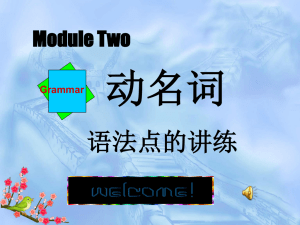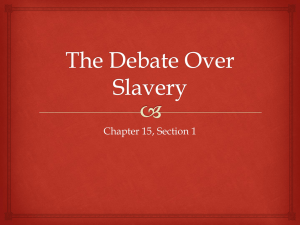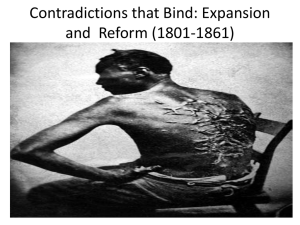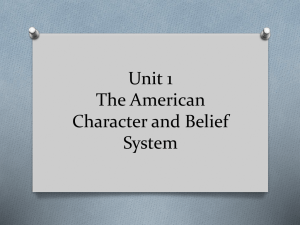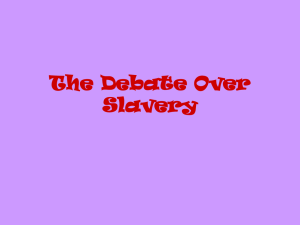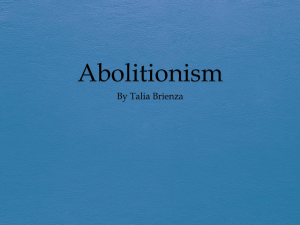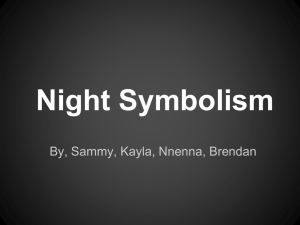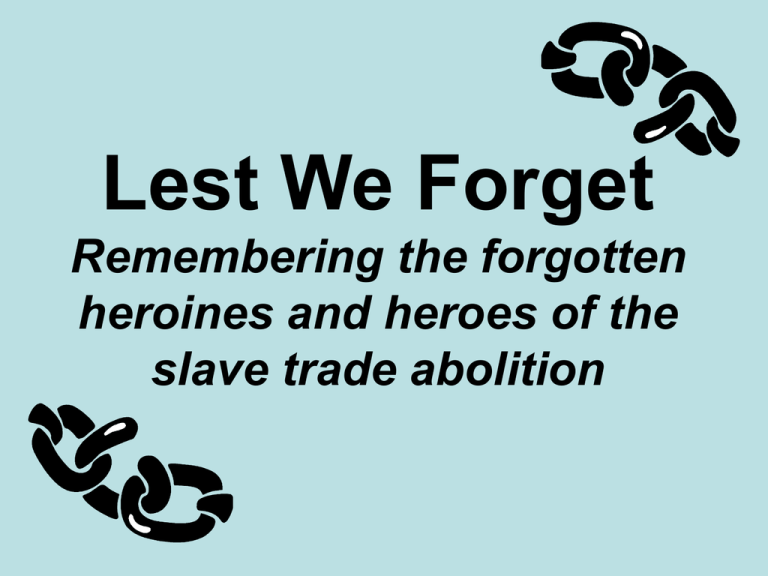
Lest We Forget
Remembering the forgotten
heroines and heroes of the
slave trade abolition
Lest we forget : Heroes and Heroines.
Please take a moment to read about them…
Olaudah Equiano (c.1745 – 31 March 1797),
also known as Gustavus Vassa, was an
eighteenth century merchant seaman and
writer of African descent who lived in Britain's
American colonies and in Britain. He was a
leading influence in the abolition of slavery.
Lest we forget : Heroes and Heroines.
Please take a moment to read about them…
Samuel 'Sam' Sharpe, National Hero of Jamaica
was born in 1801 in Jamaica. He was also known
as 'Daddy' Sharpe. He was a slave throughout his
life, though he had been allowed to become a welleducated man. Because of his education he was
highly respected by other slaves and he became a
well known preacher and leader. Sharpe was a
Deacon at the Burchell Baptist Church in Montego
Bay. He spent most of his time travelling to different
estates in St. James area educating the slaves
about Christianity and freedom.
In the mistaken belief that emancipation had
already been granted by the British Parliament,
Sharpe organised a peaceful strike across many
estates in western Jamaica at a critical time for the
plantation owners: harvest of the sugar cane.
Lest we forget : Heroes and Heroines.
Please take a moment to read about them…
Samuel 'Sam' Sharpe cont’d…
The Christmas Rebellion (Baptist War) began
on December 25, 1831 at the Kensington
Estate. Reprisals by the plantation owners led
to the rebels burning the crops, but the slaves
did not attack the white population. The
rebellion was put down by the Jamaican militia
within two weeks and many of the ringleaders,
including Sharpe, were hanged in 1832. The
rebellion caused two detailed Parliamentary
Inquiries which contributed to the 1833
Abolition of Slavery across the British Empire.
In 1975, the government of independent
Jamaica proclaimed Sharpe a National Hero
with the title Rt. Excellent Samuel Sharpe.
Lest we forget : Heroes and Heroines.
Please take a moment to read about them…
Harriet Tubman (c. 1822–March 10, 1913),
also known as "Moses of Her People," was an
African-American abolitionist. An escaped slave,
she made approximately 20 voyages to rescue
about 300 enslaved friends and family to
freedom in Canada. During her lifetime she
worked as a lumberjack, laundress, nurse, and
cook. As an abolitionist, she acted as
intelligence gatherer, refugee organizer, raid
leader, nurse, and fundraiser.
Lest we forget : Heroes and Heroines.
Please take a moment to read about them…
Mary Prince, the daughter of slaves, was born at Brackish
Pond, Bermuda, in about 1788. Her father was a sawyer
and her mother a house-servant. Mary and her parents
were the property of Charles Myners.
When Myners died Mary and her mother were sold to
Captain Williams. Mary now became the personal slave of
his daughter, Betsey Williams. When she was twelve
years old Mary was hired out to another plantation five
miles away. Soon afterwards Williams sold her to another
family.
Mary Prince worked as a domestic slave and in the fields
and during this period she was constantly flogged by her
mistress.
She later wrote: "To strip me naked - to hang me up by the
wrists and lay my flesh open with the cow-skin, was an
ordinary punishment for even a slight offence."
Lest we forget : Heroes and Heroines.
Please take a moment to read about them…
Mary Prince cont’d…
Her master later sold her to another man and in 1806 Mary
Prince was sent to work on the salt pans of Turk Island. In
1818 Mary Prince was then sold to John Wood, a plantation
owner who lived in Antigua, for $300. She later wrote: “My
work there was to attend the chambers and nurse the child,
and to go down to the pond and wash clothes. But I soon fell ill
of the rheumatism, and grew so very lame that I was forced to
walk with a stick.”
She began attending meetings held at the Moravian Church
where she learnt to read. While in Antigua she met the
widower, Daniel Jones, a former black slave who had
managed to purchase his freedom. Jones asked Mary to marry
him. They were married in the Moravian Chapel in December
1826. John Wood was furious when he found out and once
again she had to endure a severe beating with a horsewhip.
Lest we forget : Heroes and Heroines.
Please take a moment to read about them…
Mary Prince cont’d
Wood and his wife took her as their servant to London.
Soon after arriving in England in 1828 she ran away and
went to live at the Moravian Mission House in Hatton
Gardens. A few weeks later she went to work for Thomas
Pringle, a member of the Anti-Slavery Society. In 1831
Pringle arranged for her to publish her book, The History of
Mary Prince, A West Indian Slave. The History of Mary
Prince (1831) was the first life of a black woman to be
published in Britain.
This extraordinary testament of ill-treatment and survival
was a protest and a rallying-cry for emancipation that
provoked two libel actions and ran into three editions in the
year of its publication.
Lest we forget : Heroes and Heroines.
Please take a moment to read about them…
Mary Prince cont’d
After publication of the book John Wood sued the
publishers claiming that Mary Prince work had
"endeavoured to injure the character of my family by the
most vile and infamous falsehoods". Wood lost his case.
Two prominent supporters of slavery in Britain, James
MacQueen and James Curtin, took up Wood's case and in
an article in Blackwood's Magazine, claimed that Prince's
book contained a large number of lies. Prince and her
publisher sued MacQueen and Curtin for libel and won their
case.
It is thought that Prince remained in England after 1833,
perhaps continuing to work as a servant. Her History is an
important contribution to early black writing, and it offers a
glimpse into the lives of enslaved men and women whose
life stories cannot be traced.
Lest we forget : Heroes and Heroines.
Please take a moment to read about them…
Toussaint L'Ouverture, François Dominique
c.1744–1803, Haitian patriot and martyr. A selfeducated slave freed shortly before the uprising in
1791, he joined the black rebellion to liberate the
slaves and became its organizational genius.
Rapidly rising in power, Toussaint joined forces,
briefly, in 1793 with the Spanish of Santo Domingo
and in a series of fast-moving campaigns became
known as L'Ouverture [the opening], a name he
adopted. Although he professed allegiance to
France, first to the republic and then to Napoleon, he
was singleheartedly devoted to the cause of his own
people and advocated it in his talks with French
commissioners. Late in 1793 the British occupied all
of Haiti's coastal cities and allied themselves with
the Spanish in the eastern part of the island.
Lest we forget : Heroes and Heroines.
Please take a moment to read about them…
Toussaint L'Ouverture cont’d…
He was the acknowledged leader against them
and, with the generals Dessalines and
Christophe, recaptured (1798) several towns
from the British and secured their complete
withdrawal. In 1799 the mulatto general André
Rigaud enlisted the aid of Alexandre Pétion
and Jean Pierre Boyer, asserted mulatto
supremacy, and launched a revolt against
Toussaint; the uprising was quelled when
Pétion lost the southern port of Jacmel. In
1801, Toussaint conquered Santo Domingo,
and thus he governed the whole island. By
then professing only nominal allegiance to
France, he reorganized the government and
instituted public improvements.
Lest we forget : Heroes and Heroines.
Please take a moment to read about them…
Toussaint L'Ouverture cont’d…
Napoleon sent (1802) a large force under
General Leclerc to subdue Toussaint, who
had become a major obstacle to French
colonial ambitions in the Western
Hemisphere; the Haitians, however, offered
stubborn resistance, and a peace treaty was
drawn. Toussaint himself was treacherously
seized and sent to France, where he died in a
dungeon at Fort-de-Joux, in the French Jura.
His valiant life and tragic death made him a
symbol of the fight for liberty, and he is
celebrated in one of Wordsworth's finest
sonnets and in a dramatic poem by
Lamartine.
Lest we forget : Heroes and Heroines.
Please take a moment to read about them…
Sojourner Truth (c. 1797– November 26,
1883) was the self-given name, from 1843,
of Isabella Baumfree, an American
abolitionist. Truth was born into slavery in
Swartekill, New York. Her best-known
speech, which became known as Ain't I a
Woman?, was delivered in 1851 at the
Ohio Women's Rights Convention in
Akron, Ohio.
Lest we forget : Heroes and Heroines.
Please take a moment to read about them…
Paul Bogle (1822 - 1865) was a Baptist
Deacon and a Jamaican rebel. Being a
Christian, he helped his congregation cope
with the poverty and social injustices they
experienced by reading and applying lessons
from the Bible. During this time, Bogle was one
of only 104 men who could vote in his
community of St Thomas. He was a leader of
the 1865 Morant Bay Rebellion, and was
captured in October 24 and executed by the
United Kingdom (Jamaica was a British colony
at that time). He was later named a National
Hero of Jamaica with the title Rt. Excellent
Paul Bogle. He is depicted on the heads side
of the Jamaican 10-cent coin as such.
Lest we forget : Heroes and Heroines.
Please take a moment to read about them…
Ignatius Sancho (1729-1780) is thought to have been
born a slave on a ship crossing the Atlantic
from Africa to the West Indies. His earliest memories
were of Greenwich, near London, where he worked as a
child slave. He persuaded the powerful Montagu family
to employ him as their butler, an important position,
before retiring to run a grocery shop in Westminster. He
composed music, appeared on the stage, and
entertained many famous figures of literary and artistic
London. The first African we know of to vote in a British
election, he wrote a large number of letters which were
collected and published in 1782, two years after his
death. He was thought of in his age as "the
extraordinary Negro", and to eighteenth-century British
opponents of the slave trade he became a symbol of the
humanity of Africans, then disputed by many.
Lest we forget : Heroes and Heroines.
Please take a moment to read about them…
Ottobah Cuguano, was born in the 1750s in West Africa. He
came from a high-ranking family. His father was a companion to
the local chief, and he was brought up with the children of the
chief. He then went to stay with an uncle who lived some way
from his home town. Cuguano and his cousins often went into
the woods to play and hunt. One day, they were taken prisoner
by a gang of men, who accused them of a crime against the local
chief. They were marched off and enslaved. He was taken to
the coast, and sold through one of the European trading
forts. He was taken by ship across the Atlantic Ocean and sold
to a plantation-owner on the island of Grenada. He was then
sold to a man who moved from Grenada to England, and he
came with him as his personal servant. He wrote Thoughts and
Sentiments on the Evil and Wicked Traffic of the Slavery and
Commerce of the Human Species, published 1787. By 1788 he
was a free man, and working as personal servant to Richard
Cosway, who was the court painter to the Prince of Wales.
Lest we forget : Heroes and Heroines
Lest we forget : Heroes and Heroines
Paul Bogle (1822 - 1865) was a Baptist Deacon and a Jamaican rebel.
Lest we forget : Heroes and Heroines
Lest we forget : Heroes and Heroines
Samuel 'Sam' Sharpe
National Hero of Jamaica was born in 1801 in Jamaica.
Lest we forget : Heroes and Heroines
Lest we forget : Heroes and Heroines
Lest we forget : Heroes and Heroines
Bishop Samuel Adjai (Ajayi) Crowther (c. 1807 – 31 December
1891) was a linguist and the first African Anglican bishop in Nigeria
Lest we forget : Heroes and Heroines
Lest we forget : Bloomsbury’s Past
Extract from
Bloomsbury’s
Church Meeting
Minutes of 3 May 1851
Lest we forget : Slavery Today
Human Trafficking: Chinese labourers were drowned in the rising waters as they
picked cockles in Morecambe Bay in the northwest of England. They were being paid
the equivalent of less than $2 a day.
Lest we forget : Slavery Today
In Niger, slavery was only criminalised in 2003 - and the local human rights
organisation Timidria estimates 870,000 people are still held in bondage there.
Lest we forget : Slavery Today
Modern day slavery is not usually associated with the West - but tens of thousands
of women are trafficked there every year as sex workers and forced labourers.
Lest we forget : Slavery Today
A sweatshop factory is one where workers are abused in
violation of that country's labour laws


